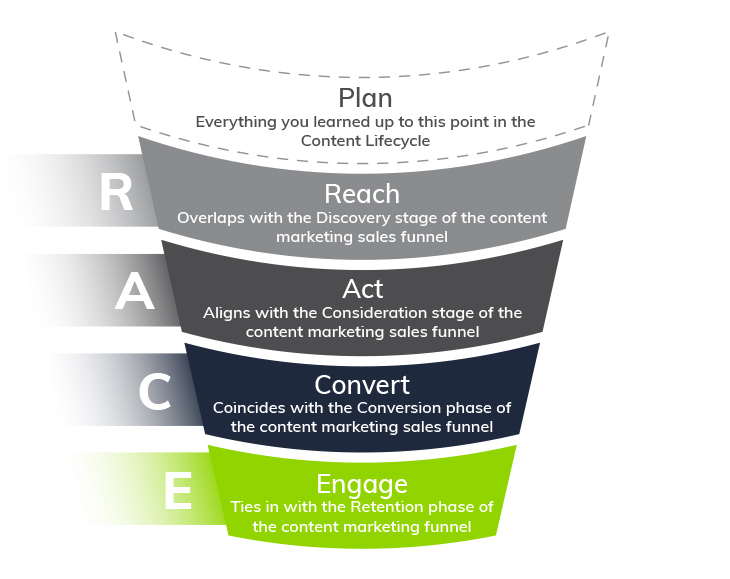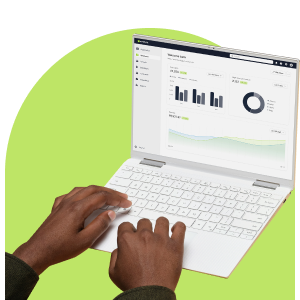The RACE Planning Framework was developed by Smart Insights;
a company that realised that most companies were doing digital marketing, but without a defined strategy.
How can you use it when implementing your content marketing strategy?
Check out our infographic and read the tips below.

The RACE Framework divides the digital marketing process into five main phases:
1. Plan
This planning phase represents the silent ‘P’ in (P)RACE. It includes steps 1, 2, and some of 3 in the Content Marketing Lifecycle, including:
- Finding your purpose, setting goals, and creating your content marketing mission statement
- Understanding your audience and creating client personas
- Mapping your customer journey and understanding the sales funnel
2. Reach
Reach represents the ‘R’ in RACE and overlaps with the discovery stage of the content marketing funnel. It involves:
- Maximising your reach via paid, owned, and earned media
- Driving traffic to your website, landing pages, or social platforms
- Using inbound campaigns
- Reviewing your current digital media use and finding improvement opportunities
- Implementing ‘always-on’ content marketing via paid search and social media
- Setting objectives for VQVC (volume, quality, value, cost)
What are VQVC Objectives?
When planning the reach phase, your VQVC measures from Google Analytics include:
- Volume: Unique visitors, visits, pageviews
- Quality: Conversion rates, bounce rate, time on site
- Value: Revenue per visit, goal value, profit
- Cost: Google Ads and product cost

3. Act
Act is the ‘A’ in RACE (for interact). It aligns with the Convert phase. You should:
- Plan how you’ll persuade prospects to take next steps
- Develop your strategy using personas and journey mapping
- Use a content calendar to schedule posts
- Create content assets and videos
4. Convert
Convert is the ‘C’ in RACE, matching the Close phase of your funnel. In this stage:
- Get your audience to make a purchase or take action
- Use automated marketing to target ready-to-convert leads
- Remarket using Google Ads and social media
- Use CRO (Conversion Rate Optimisation) tactics
What is Conversion Rate Optimisation (CRO)?
According to Crazy Egg, CRO is “the process by which a business increases the percentage of website visitors who convert on available offers.”
Read more.

5. Engage
The final RACE stage is Engage – the Delight phase of your funnel. Focus on:
- Building loyalty with personalised content
- Driving advocacy and referrals
- Keeping channels open using newsletters, social media, and automated journeys
- Onboarding clients via a triggered email series
- Reviewing loyalty with RFM analysis
What is RFM Analysis?
RFM = Recency, Frequency, Monetary. This model segments users by behaviour to personalise messaging.
Read more on Putler.

For more information on building a content marketing strategy for your business, click on the link below.
More titbits from these white papers have also been published on our blog, so
look around for more.



